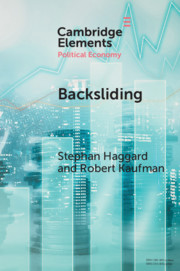Element contents
Backsliding
Published online by Cambridge University Press: 19 January 2021
Summary
- Type
- Element
- Information
- Series: Elements in Political EconomyOnline ISBN: 9781108957809Publisher: Cambridge University PressPrint publication: 11 February 2021

